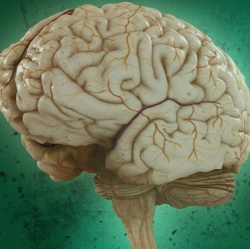
In a review of neuroscience literature, researchers proposed a new framework for understanding “mind wandering” and mental illness. Within this framework, spontaneous thought processes, including mind-wandering, creative thinking, and dreaming, arise when thoughts are relatively free from deliberate constraints.
“We propose that mind-wandering isn’t an odd quirk of the mind,” said Kalina Christoff, Ph.D., the review’s lead author and a professor of psychology at UBC. “Rather, it’s something that the mind does when it enters into a spontaneous mode. Without this spontaneous mode, we couldn’t do things like dream or think creatively.”
“Mind-wandering is typically characterized as thoughts that stray from what you’re doing, but we believe this definition is limited,” Christoff said. Instead, mind-wandering happens when thoughts flow freely (that is, when the mind is in its default state).
In contrast, mental disorders, such as anxiety and depression, arise when two types of constraints, automatic and deliberate, disrupt free movement of thoughts and ideas.
“Sometimes the mind moves freely from one idea to another, but at other times it keeps coming back to the same idea, drawn by some worry or emotion,” said Christoff. “Understanding what makes thought free and what makes it constrained is crucial because it can help us understand how thoughts move in the minds of those diagnosed with mental illness.”
The team’s meta-analysis reframes disorders, anxiety, and ADHD, for instance, as extensions of a normal variation in thinking, the researchers explain. The anxious mind helps us focus on what’s personally important, while the ADHD mind is marked by an excessive variability in thought (too much spontaneity).
This new perspective on mind-wandering could help psychologists gain a more in-depth understanding of mental illnesses, said review co-author Zachary Irving, a postdoctoral scholar at the University of California, Berkeley, who has ADHD.
The review was also co-authored by a researcher from Cornell University and one from the University of Colorado Boulder.
